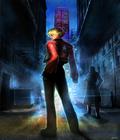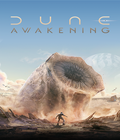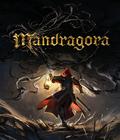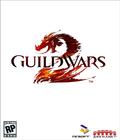There's a lot to talk about with Guild Wars 2. I had the chance to play the beta for a few hours this past weekend as part of a guided tour, and I feel as though I've only scratched the surface. It's a seriously ambitious game, which is unusual both in the current climate and in MMORPGs in general, and there's a substantial learning curve involved.
The first thing I noticed upon playing it for the first time is that this is a big game. In a lot of RPGs, a village tends to either be a burned-out ruin or three buildings, 20 people and four vendors. It's not so much a town as a clearing with delusions of grandeur.
The opening area in the human starting zone, for example, actually looks like a place where people might live and work. You're not meant to linger for any significant length of time, as it's really just a background for a pitched battle with a tribe of centaurs; in almost any other game, it'd be a glorified corridor with a bunch of locked doors and invisible walls. Here, it feels like what it's meant to be: a place where humans live and something terrible is happening.
Once you get through that introductory scenario and into the larger world, that tendency continues. There are five playable races in GW2, three of which were available for play, and with each of them, there's a sense of scale that most games don't even attempt. An overworld map is a big chunk of open countryside, filled with the usual animals and roaming mobs, but with a lot of places to explore and secrets to find. Norns begin the game at a festival in the mountains, as your character sets out to become a legend, and there are dozens of other Norns in the area with goals of their own. The cities are massive, packed with buildings you can explore and crowds of NPCs with things to say. Arena.net's been working on GW2 for the last five years, and you can see a lot of that development time in effect by just walking around the game world.
After a bit of play, things get steadily more complicated. One of the developers' stated objectives with Guild Wars 2 is to reject a lot of the design clichés of a modern MMO, and toward that end, there are no "quest hubs." The main thrust of the game's design is to allow you to customize your character's individual story. During creation, you can establish facts about your character's past and future, such as his childhood, friends, regrets or upbringing, and those choices influence your character arc. A human who grew up poor has to deal with a rival street gang; another human from a working-class background ends up chasing bandits out of a friendly innkeeper's tavern.
Your character's story arc extends all the way to level 80 and involves single-player dungeon runs and a lengthy series of quests. Decisions you make during those quests are reflected by changes in your character's home instance, which is a personalized neighborhood within your race's home city. For humans, this means a four-block area within Divinity's Hope, where you hang out with friends and see the consequences of your actions.
When you move out into the larger, shared game world, you're occasionally guided to a new area by a friendly NPC, but missions are more open-ended than specific. In another game, you might pass a farmer who wants you to water six plants or collect chunks of 10 local monsters; here, if you decide to help that farmer, you can do one of several tasks until you've filled up a progress meter. That might mean watering crops, killing worms that infest the fields, feeding the farmer's cows or chasing off bandits. You can also ignore the farmer completely if you'd prefer.
At the same time, there are a lot of random missions that simply occur on their own time. In the Norn starting area, you're asked to assist the various shamans of the Norns' animal spirits. The whole mountain's infested by the Sons of Svanir, a cult that worships the late Svanir, who you may remember from Eye of the North, and there's a good chance that any time you get close to one of the shamans, the Sons have already taken him out. This isn't a scripted event; it's simply that any enemy you're asked to help fight in GW2 is actually doing something that makes him your enemy. They aren't malevolently lurking in a clearing about 20 yards from a static quest-giver; they're actually out causing very real problems.
Part of the purpose of this redesigned mission structure is to emphasize social interaction. When another player shows up, you'll probably want to team up with him because it does you no real harm if somebody else is working on the same task. It's not possible for another player to "poach" quest mobs or monopolize whatever resource you're there to collect. In the event that a given mission involves combat, it's likely that you'll want somebody else just to watch your back, as Guild Wars 2 is a surprisingly difficult game.
This relates back to another element of the game's design. Most MMORPGs feature the old "holy trinity" school of group play, where in a five-person party, one person's the meat shield, one's a healer, and the rest inflict damage. GW2 rejects that entirely and makes each player mostly responsible for his or her own personal survival.
At level one, each character receives two major defensive abilities: a reasonably powerful self-heal on a 30-second cooldown and an evasion roll. The healing move is fairly self-explanatory, but the evasion roll's interesting. By double-tapping a movement key, your character does a diving somersault in the direction you chose, which also triggers a short window of complete invulnerability. Any attack that strikes you during the roll misses completely and has no effect.
On top of that, you gradually acquire dozens of possible skills, most of which are designed for tactical purposes as opposed to just making big numbers fly around. Even at low levels, a character in GW2 is surprisingly mobile, with early access to a lot of moves that enhance your mobility or decrease the target's. Your character seems to always be in motion, whether it's kiting an opponent, flipping over his head, or conjuring up walls of force or illusionary allies.
The idea behind GW2's combat is that even in PvE, you never just run up to an enemy and start whaling on him like a particularly bloody version of Rock 'Em Sock 'Em Robots. You don't simply pop a defensive move and watch as scrolling text informs you that an attack missed; you actually get the hell out of the way before you're hit. That may involve the evasion roll; any of a couple of dozen "wall" spells that prevent, reflect, or prohibit enemy attacks; or evasive abilities like a guardian's Aegis or a mesmer's invulnerable Mist Form.
If you try to play GW2 like it's almost any other MMO, the incoming damage can add up ridiculously quickly. Combat in GW2 is balanced around evading attacks rather than taking them on the chin and healing afterward. We got a chance to play-test a five-man, level-30 dungeon as part of our beta experience, and most of us spent a lot of time on the floor. In a quest that's designed for group play, the enemies are powerful enough to kill you in seconds unless you're very careful and you work very closely with your party. This is not a game you're going to want to play with random strangers, and if you're in the habit of running dungeons with the same people, you're going be attuned to each other like some kind of commando unit.
When you do go down, death doesn't kick in right away. After you run out of HP, your character hits the ground and starts bleeding out. At that point, you have a number of class-specific options to attack an enemy or get yourself back on your feet, sort of like when you're incapacitated in Left 4 Dead. If you manage to kill an opponent with whatever weak attacks your class has — throwing rocks, casting spells, calling a pet to help you, etc. — you Rally and pop back up at roughly half your maximum health. Otherwise, you have to rely on a party member to help you back up to your feet, or else an enemy may finish you off.
A friend of mine was talking about this a few weeks ago, and I said somewhat sarcastically that it sounded like he was describing a massively multiplayer brawler, like Streets of Rage or something. After having played Guild Wars 2, that comparison's a little more apt than I would've guessed. It doesn't feel like MMO combat; instead, it's a complex action game that's sort of dressed up in an MMO's clothes, with a significant emphasis on cooperative play. "Alone" in GW2 tends to mean "dead."
This is particularly true in the game's PvP system. Starting at level two, any player can open a menu and go "into the Mists" from anywhere in the game world. This is a mostly plotless alternate dimension where you can participate in small-scale team PvP or massive world-versus-world brawls against anonymized players from other servers. All players in the Mists operate on a roughly equal field: If you aren't level 80, you're temporarily bumped up to that level, and vendors in the starting area lend you free high-level PvP equipment. There's no associated grinding for gear before you're competitive.
All of the maps we played involved both siege weaponry and point control. The small team-based games took place on relatively small maps, where the first team to hit 500 points won the round. Actually fighting and killing other players was only worth five to ten points apiece, and the winner of a given match tended to be whoever was able to successfully control more points on the map. Both sides had access to siege weapons, such as a trebuchet, which offered the person using them a lot of control over the map, as getting hit with the trebuchet did ridiculous amounts of damage. It was a bit like the queen on a chessboard: it wasn't absolutely necessary for victory, but if at all possible, you want to destroy the other team's trebuchet while keeping hold of yours.
The world-vs-world fights were a bit harder to get a handle on. I distinctly remember I was able to fling diseased cows out of a catapult, which triggered a massive damaging poison cloud on impact, so there's that. I feel like that may be the most important thing I have to say about GW2: it offers the chance to launch a devastating cow offensive.
In world-versus-world games, up to four teams struggle on a large map to control as many fortresses and resources as possible within that area. Characters on an opposing team are nameless and largely unidentifiable; you see them as anonymized colors and classes. If you're fighting the blue team, the characters on it are Blue Warriors or Guardians. They're still distinctly controlled by human players because they're focusing fire and jumping around like idiots, but there's no way to tell who you're fighting.
That's really just the tip of the iceberg. I spent two afternoons playing Guild Wars 2, with developers helping to walk me through it, and I don't really feel like I've gotten a handle on it yet. Every other MMO I've been playing lately limits itself; they want that casual, pick-up-and-play market. GW2 is apparently after the people who want a challenge and are looking for something they can sink their teeth into.
The current buzzword for games design, whether or not the people designing games mean this to be the case, is "safe." Much as with movies and comics and, to some extent, television, nobody wants to do anything too crazy or innovative; they don't want to gamble all that development money on something that is going to take time to find an audience. It's about quick, sure profits on the backs of a built-in, targeted market: franchises, remakes, and appeals to nostalgia.
On that basis, Guild Wars 2 is probably the single most ambitious project I've seen in the last five years. It isn't at all safe. It is designed by people who wanted to upset an apple cart, to challenge the idea of a modern MMORPG. This game will cause shockwaves.
More articles about Guild Wars 2











 While Guild Wars 2 adds a persistent world, it retains the unique characteristics of the original game, including a strong narrative, extensive instanced game play, an anti-grind design philosophy, and strong support for competitive play.
While Guild Wars 2 adds a persistent world, it retains the unique characteristics of the original game, including a strong narrative, extensive instanced game play, an anti-grind design philosophy, and strong support for competitive play. 

















































